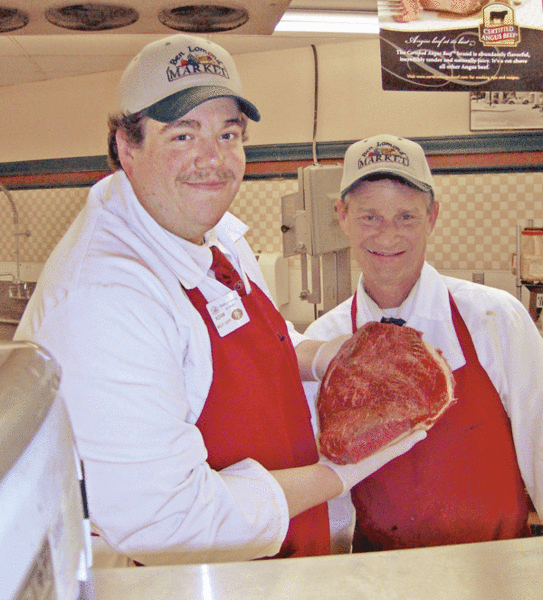Your butcher should be your best friend. In the grocery store, that is.
Meat, poultry and fish are where the greatest portion of my food budget is spent, and is also where most of my mistakes have been made. Some of these mistakes include not knowing how to choose the correct cut or properly cook the meat I have just purchased.
My mother-in-law Anna was always greeted by her butcher by her name and a warm “What can I get for you, little lady?” Small talk followed, and Anna always left the shop with a smile. I soon realized this was a win-win situation—I liked the friendliness!
Adam Allgrove, my go-to butcher at Ben Lomond Market, became my friend years ago. I had looked Adam in the eye, explained that I was new in town, gave him my name and that I enjoyed the meat and poultry from his showcase, plus the fact the fish was brought in fresh daily really pleased me. Thus began our butcher-customer friendship.
“What are you cooking today, Colly?” is Adam’s greeting to me, which usually begins a how tender is the cut, the proper temperature for my oven and length of cooking time conversation. Adam has never let me down, and I never cease learning something new from him.
Born in Dominican Hospital in Santa Cruz, Adam moved to Ben Lomond and began as an apprentice butcher in Ben Lomond Market in 2003. He attended Cabrillo College’s sausage and curing courses and today makes the raw sausages and the fire-glazed spiral-cut bone-in hams.
Pork sold at the market is Prairie Fresh Pork Farm’s 100 percent natural antibiotic-free meat explained Adam. I personally can attest to the amazing tenderness of the pork chops that I barbecued last week.
At Adam’s suggestion, I salted and seasoned the chops on each side and let them rest for 30 minutes at room temperature. Over a hot grill, I cooked them for two minutes a side, then covered the grill, turned the grill to medium and continued cooking for approximately five minutes until their temperature reached 140 degrees. Resting the chops for five minutes allowed the juices to be absorbed back into the meat. Delicious!
Superior Farms lamb sold at the market is raised on small, sustainable farms throughout the U.S.
Beef sold at the market is USDA Choice Certified Angus beef. Hamburger is ground daily and is 80 percent lean and 20 percent fat (best for flavor), and ground sirloin is 90 percent lean meat and 10 percent fat.
Knowledge about fat versus muscle in beef cuts will help you in choosing tender meat.
Surprisingly, only about two percent of Adam’s customers ask any of the 10 questions we should know about the meat, poultry and fish we buy. What to look for when buying meat, like where was the beef raised and was it grass-fed and finished on grain? Does the meat have a rich vibrant color and is the meat well-marbled? How has the veal been fed (suckled by its mother) and then sent out to pasture? How has the meat been aged, dry or wet-packaged? Does the meat have any additives? Has the poultry been caged or is it free-range? With fish, what is wild-caught versus farm-raised?
Adam’s personal favorite chicken is Mary’s free-range. He has toured their processing facility and while I will not go into details here, Adam was impressed by the quality of meat, the cleanliness and the humane treatment of their poultry.
Some of my best talks with Adam have taken place in front of the fresh fish counter, and let me emphasize the word fresh. When in season, Dungeness crabs are delivered live and cooked on site.
Take my years of experience and advice. The next time you are at the market don’t use the old walk on by method with your butcher; use the eye contact method. You’ll both be glad you did!
Texas-style Beef Brisket and Beans
4 pounds brisket
1 ½ cups beef stock
1 40 ounce can SunVista Pinto Beans
Mix together:
2 tablespoons chili powder
1 tablespoon salt
1 tablespoon garlic powder
1 tablespoon onion powder
1 tablespoon black pepper
1 tablespoon Sugar
2 teaspoon dry mustard
1 bay leaf, crushed
Rub onto both sides of brisket and pan roast uncovered, for one hour at 350 degrees.
Add beef stock, cover pan tightly, lower oven to 300 degrees.
Roast 3 to 4 hours until fork-tender.
Remove meat from pan and in meat juices, add drained Pinto Beans.
Simmer 30 minutes.













